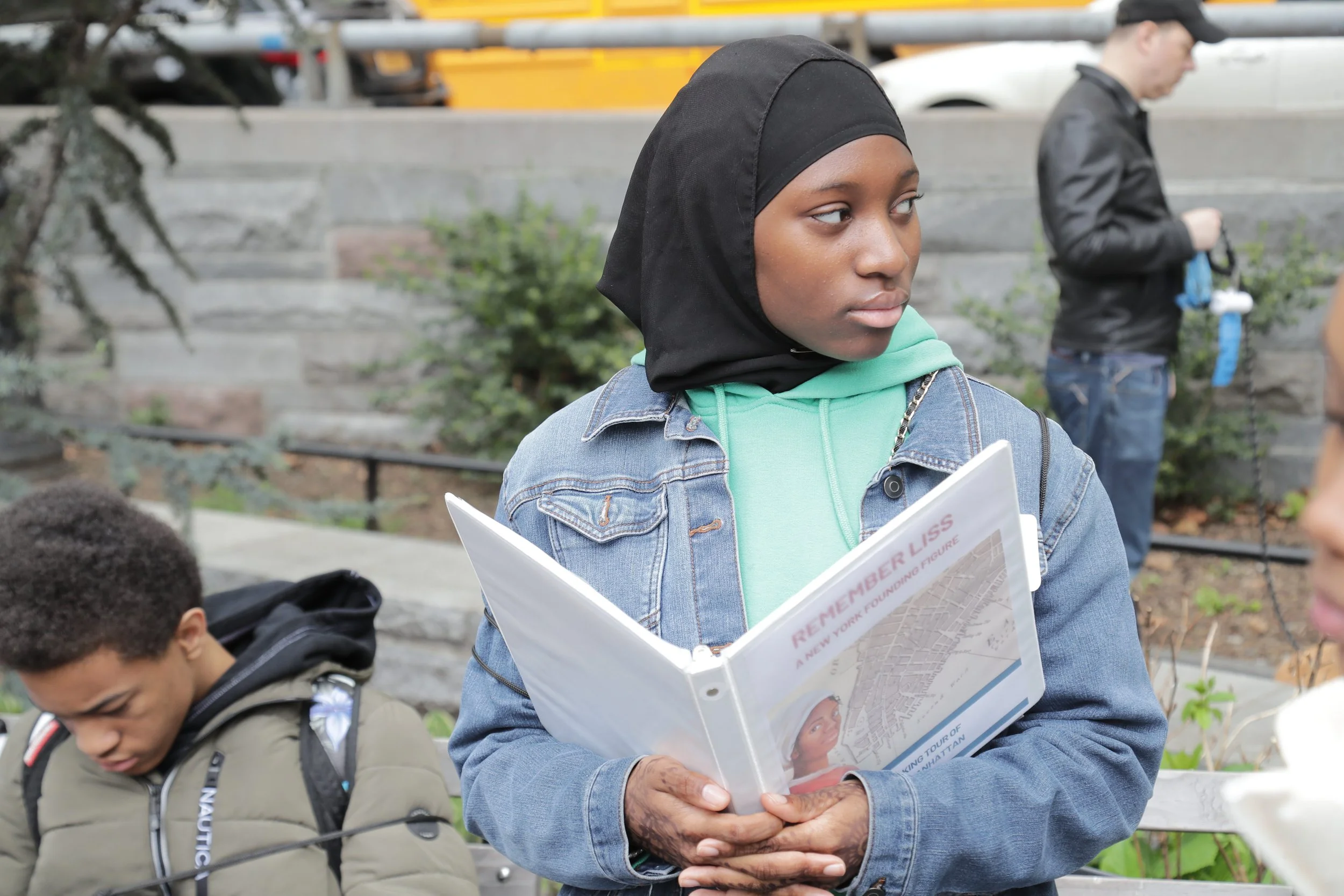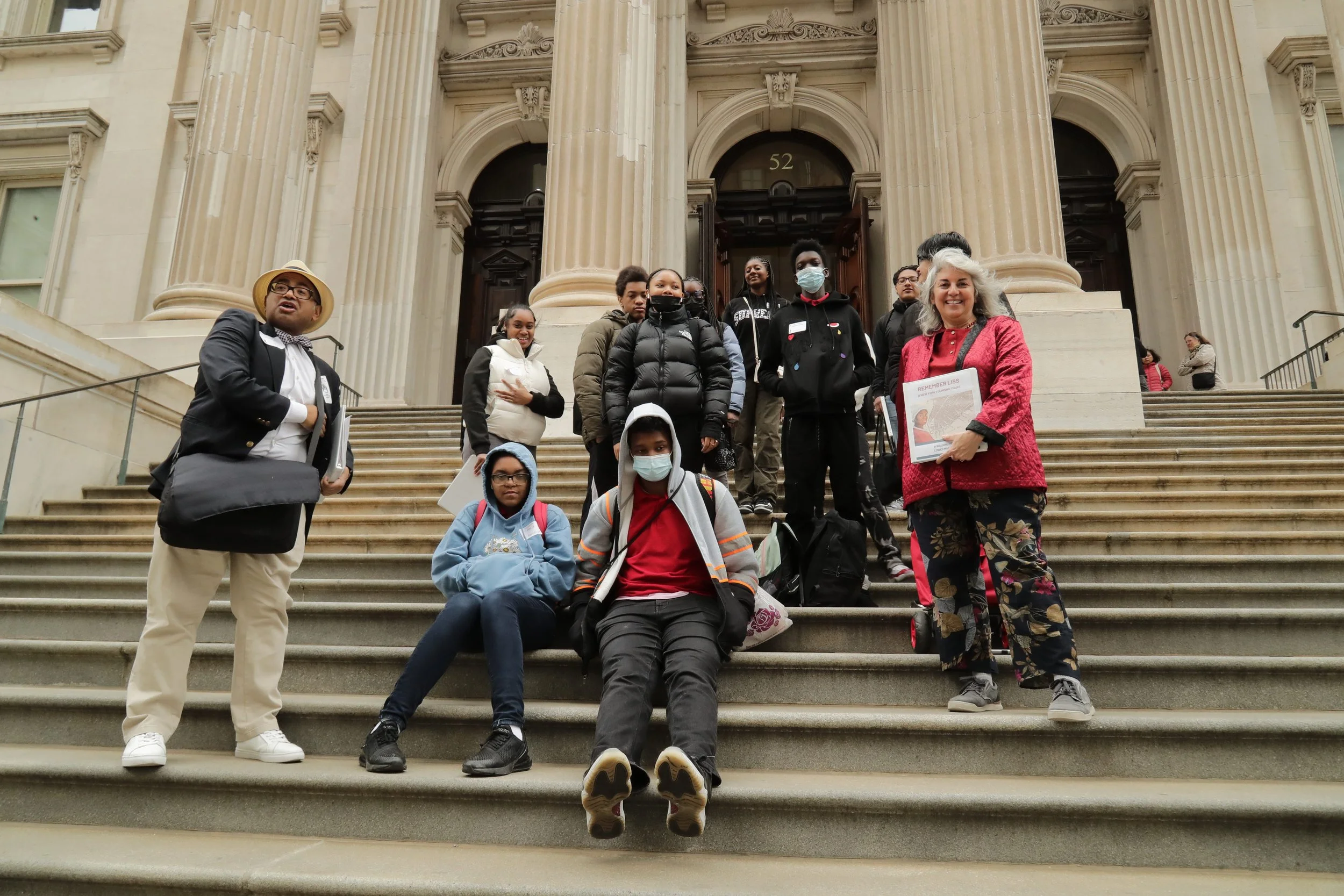Local New York City Students Remember Liss
In collaboration with the United Way of New York City and the NYC Department of Education (NYC DOE), the Education Equity Action Plan Coalition (EEAPC) hosted a Read Aloud Event for students from District 5 presented by historian, author and founder of Remember Liss, Claire Bellerjeau. She read passages from her new book Remember Liss: A New American Founding Figure, which shares an untold story of the American Revolution.
Elizabeth (or Liss for short) was enslaved by American brothers Samuel and James Townsend, in 18th century Long Island. She was one of the reported 19,062 enslaved people in the colony of New York. Subjected to the poor and inhumane conditions most enslaved people suffered at the time, Liss attempted to break free. In May 1779, when the Queen’s Rangers left Oyster Bay, Long Island, Liss successfully escaped with the British troops. Unfortunately, she was re-enslaved by a British officer in New York City. After her capture, Liss overheard and had access to British intel, including a treason plot, and used this to her advantage. In her presentation, Claire hypothesized that Liss crossed enemy lines as a spy in the American Culper Spy Ring servicing then General George Washington.
Claire further informed the students of the realities of slavery, often skimmed over or fully omitted in the story of the nation’s rocky founding. The author shared her hopes of what Liss’ story can do to change the narrative around the American Revolution,“History of Black people shouldn’t be separated from the history of other people. They’re all Americans, she said “This should all be one history, all taught at the same time together…She [Liss] represents the 20% of people of the NY population who were enslaved Black people whose stories are not being told. I have learned so much about her [Liss’] life... She can be a representative. Her story can illuminate all their lives.”
Although the students were quite reserved for the presentation, it was clear the material had an impact. Facts such as the mere existence of slavery in the northern colonies and New York having more enslaved people than the Georgia colony in the 1700s altered students’ initially more progressive picture of their home state. One student shared that she had seen a video reenactment of New York during that era, but slavery was not depicted. “I saw them [Black people] just walking around and having a good time with everyone else. I didn’t see many white people walking around or anything. I saw people of color. So when I was growing up hearing about slavery in New York? [I thought] ‘That happened?!’...I really thought that New York was free the entire time.”
Overall, the students had similar sentiments of inquiry and awe as they were interested in learning more about Liss and the untold stories of American history. In their view, this history is theirs, and there should be a more comprehensive representation of these kinds of narratives in their school’s curriculum.
A student passionate about this topic shared his thoughts on the Read Along event. “They don’t teach about enslaved people up north in school. It’s always down south, Virginia, the Confederation, the Civil War and Abraham Lincoln. I think it is important they teach this in schools because we’re in New York right now, and I never knew slavery existed in New York until right now. There were a lot of enslaved people…That was history, and we should know history.”
The EEAPC is advocating for a Black studies curriculum in public schools that will highlight Black stories such as Remember Liss to provide a more complete account of American history than what is currently being taught.



